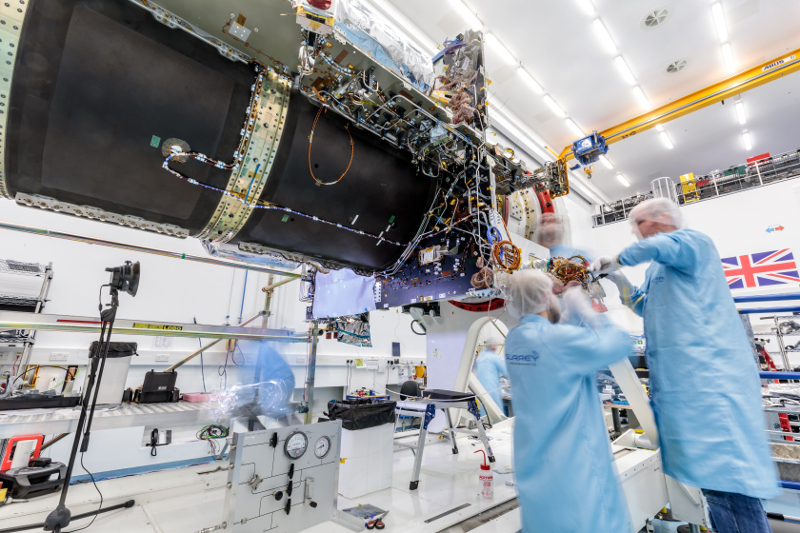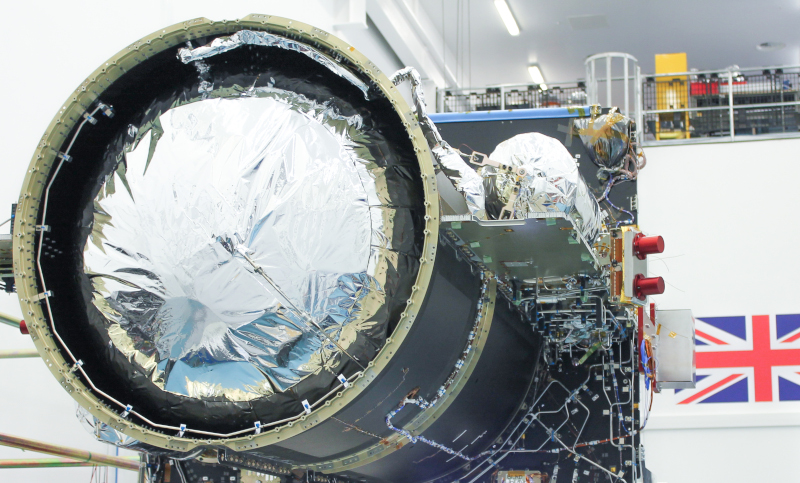
Eutelsat have just announced that in-orbit testing of the EUTELSAT QUANTUM satellite has been completed, with all subsystems and the payload working successfully and the spacecraft now operational at 48 degrees East. The operational success of the spacecraft, which was launched on 30 July 2021, marks a pinnacle milestone in SSTL’s journey to further develop its capability beyond LEO and MEO, which began ten years ago with funding from ARTES - ESA’s programme of Advanced Research in Telecommunications Systems. The development was consolidated with a contract in 2015 to supply the platform, propulsion panels, payload interface unit, gyros and wheels for the EUTELSAT QUANTUM mission.
The successful commissioning of the spacecraft is the culmination of the hard work and expertise of our engineers – it means that our small GEO platform is functioning as designed, our propulsion system has successfully delivered the satellite to its operational position, our wheels are maintaining satellite stability, our Payload Interface Unit is linking the telecommunications payload to the spacecraft’s systems, and our gyros are providing accurate data to support orbit manoeuvres and to continue maintaining spacecraft stability.

Propulsion tanks fitted to the EUTELSAT QUANTUM structure at SSTL
Approximately 100 staff at SSTL worked on the EUTELSAT QUANTUM project during the peak of the development and we have gained valuable knowledge and expertise that will help us to address our future ambitions and explore new horizons, such as Lunar communications.
The EUTELSAT QUANTUM satellite was developed within the framework of a Public-Private Partnership between Eutelsat and ESA as part of ESA’s ARTES programme. Airbus Defence and Space was the Space Segment prime and also provided the flexible payload for the spacecraft.
EUTELSAT QUANTUM is the first of a new generation of fully reconfigurable telecommunications satellites that can respond to changing demands on Earth and it is the first reprogrammable commercial telecommunications satellite to operate in a high-frequency radio range called the Ku band which is used for data transmission and secure communications, notably for ships at sea. The satellite's beams can be redirected to move in almost real time to provide information to passengers on board moving planes or ships and can also be adjusted at the push of a button, so that more data is delivered when demand surges.